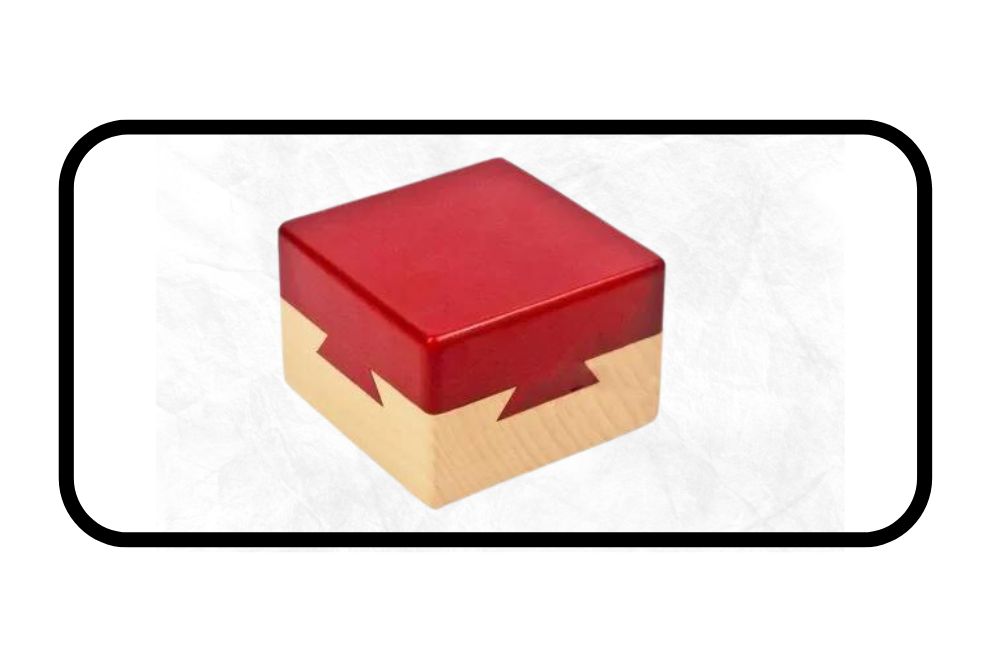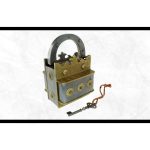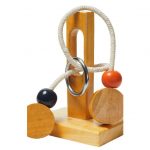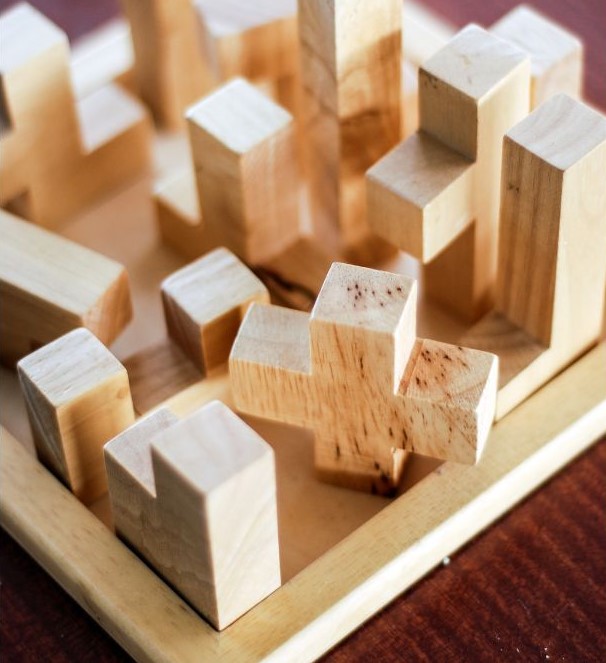Puzzle boxes are a fascinating and entertaining form of brain teasers, enjoyed by enthusiasts of all ages.
They come in a variety of shapes, sizes, and difficulty levels, offering endless possibilities for those eager to challenge their problem-solving skills.
In this article, you’ll find a comprehensive guide to help both beginners and experts unravel the secrets of these intricate puzzles.
Usually made from wood or metal, puzzle boxes are designed to challenge the mind by hiding a secret compartment that can only be accessed by solving a series of interlocking mechanisms.
These mechanisms range from simple sliding panels to complex, interconnected contraptions. The ultimate goal of any puzzle box is to keep the solver engaged and entertained along the journey of discovering its inner secrets.
Beyond just simple entertainment, puzzle boxes also offer cognitive benefits for those who engage with them, contributing to the development of a sharp and agile mind.
As you progress through this ultimate guide, you’ll uncover valuable insights into solving these enigmatic boxes, further enhancing your appreciation for the artistry and craftsmanship behind them.
History and Popularity of Puzzle Boxes
Puzzle boxes have intrigued and entertained people for centuries. These cleverly designed containers with hidden compartments and secret openings have been used to protect valuables, store confessions or simply entertain their audience.
Japanese Puzzle Boxes
The history of puzzle boxes can be traced back to Japan, where they are known as “himitsu-bako” or secret boxes. Japanese puzzle boxes were first crafted in the Hakone region during the 19th century.
They are typically made from intricate marquetry, with beautiful mosaics that help to disguise their elaborate locking mechanisms. The boxes became popular during the Edo period (1603-1868) as a form of entertainment for Japanese aristocracy.
Japanese puzzle boxes can range in difficulty, requiring anywhere from just a few steps to over a hundred moves for a solution.
The complexity of each puzzle box stems from the intricate and interconnected sliding panels that must be manipulated in the correct sequence to reveal the hidden compartment.
Puzzle Boxes in Treasure Trails
Puzzle boxes have also gained popularity in Western culture, often appearing in treasure trails or scavenger hunts. In these adventures, participants must solve a series of clues to unlock the puzzle box and find the prize hidden inside.
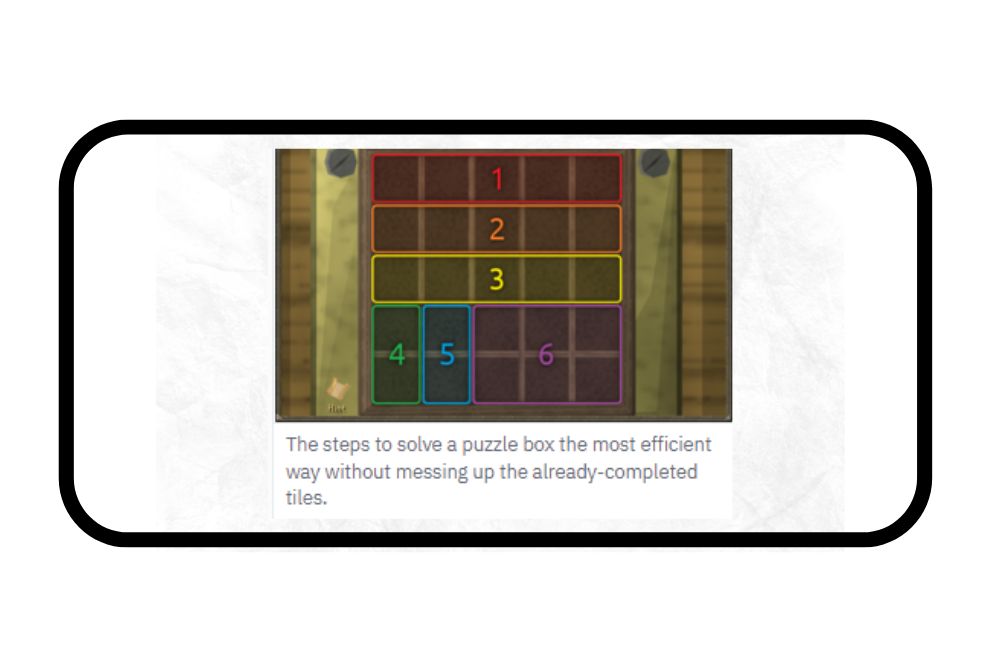
These puzzle boxes often feature creative and innovative designs, adding an exciting challenge for those who dare to take them on.
In treasure trails, puzzle boxes can come in various forms, such as:
- Sliding tile puzzles
- 3D wooden brain teasers
- Sequential movement puzzles
- Combination lockboxes
These challenges often require mental dexterity, lateral thinking and problem-solving skills, making them an entertaining and engaging pastime for puzzle enthusiasts.
Types of Puzzle Boxes
Puzzle boxes come in various forms and complexities, designed to challenge and entertain people of all ages. In this section, we will cover some of the most popular types of puzzle boxes.
One common type of puzzle box features sliding tiles. These boxes typically have a grid arrangement, where the user must arrange the tiles into a specific formation to solve the puzzle.
The tiles can be in the form of numbers, images, or even shapes that need to be arranged in a particular order or formation.
Another type of puzzle box involves images, where the goal is to reassemble a scrambled image by sliding or rotating the pieces. The challenge lies in the user’s ability to recognize the correct image orientation while maneuvering the pieces.
These boxes can have varying levels of difficulty, depending on the number of tiles and the complexity of the image.
Puzzle boxes with numbers present a unique challenge as well. The goal is to arrange the numbered tiles in a specific order, often increasing in numerical value.
These puzzles may also incorporate math-based challenges, where the user must perform calculations or adhere to specific numerical patterns to solve the puzzle.
Some puzzle boxes even combine different elements to increase the overall challenge. For example, a puzzle box may have sliding tiles, images, and numbers combined, requiring the user to solve multiple problems simultaneously.
In summary, puzzle boxes offer various challenges using different types of tiles, images, and numbers.
Selecting a puzzle box that fits your interests and skills can provide hours of entertainment and brain-teasing fun.
Getting Started with Puzzle Boxes
Puzzle boxes can be an entertaining and mind-sharpening pastime for people of all ages. As a beginner, it’s essential to be familiar with the basic techniques and principles to successfully solve these intriguing 3D puzzles.
Beginner’s Guide
Before diving into the world of puzzle boxes, it’s crucial to understand their fundamentals. Here are some tips to help beginners get started:
- Examine the puzzle box: Inspect the box carefully, paying attention to any moving parts, hidden compartments, or markings that might provide clues.
- Start with simple puzzles: Choose a puzzle box with fewer steps or simpler mechanics to build your skills and confidence before tackling more complex challenges.
- Take it slow: Don’t rush the process. Move each piece carefully and methodically, taking note of how they respond and interact with one another.
- Be patient: Puzzle boxes can be tricky and require plenty of patience. Keep in mind that it may take several attempts before you successfully solve the puzzle.
Understanding the Mechanics
The key to mastering puzzle boxes is understanding the mechanics of the box itself. These puzzles usually involve a series of sequential steps, in which moving one part creates an empty space or changes the position of other pieces.
For example, a common technique in many puzzle boxes is sliding a panel to reveal an empty space. Once the space is revealed, another piece can be moved into that space, changing the overall layout and structure of the box.
This chain reaction continues until the final goal is achieved, whether it’s opening the box or revealing a hidden compartment.
In the UK, where puzzle boxes have a rich history and thriving community, many artisans create custom puzzle boxes that incorporate unique and challenging mechanics.
As you progress in your journey, you may want to explore these beautiful and intricate creations for an extra level of challenge and enjoyment.
Step-by-Step Puzzle Box Solving Techniques
Mastering the art of solving puzzle boxes can be a rewarding and challenging experience. In this section, we will explore some basic tactics and additional techniques to help you face even the most intricate puzzles with confidence.
Basic Tactics
When attempting to solve a puzzle box, developing a clear strategy is important. The following step-by-step approach can be used as a foundation:
- Understand the puzzle: Analyze the rows, columns, and overall structure of the puzzle box. Familiarize yourself with the pieces and their possible movements.
- Start with the easiest sections: Identify the most accessible parts of the puzzle box and attempt to solve them first. This could involve simple slide puzzles, clocks or isolated sections.
- Move methodically: Progress through the puzzle by taking it one step at a time. As each part is solved, move on to the next, gradually working your way through the puzzle.
- Practice patience: Remember that solving a puzzle box can be a time-consuming and repetitive process. It’s normal for it to be hard, so don’t be disheartened if progress seems slow at times.
Additional Techniques
In addition to the basic tactics, the following techniques may be helpful for taking your puzzle-solving skills to the next level:
- Rotational moves: Clockwise and counter-clockwise movements can often be used to change the position of puzzle pieces. Experiment with these rotations to see how they impact the various components of the puzzle box.
- Use your surroundings: Look for clues that may be hidden within the design of the puzzle box itself, such as markings or patterns. These can often provide hints to help you progress through the solution.
- Try different sequences: Sometimes, altering the order in which logical steps are applied to a puzzle box can result in a different outcome. This can be particularly helpful for multi-stage puzzles that require a specific order of moves to be solved.
- Keep practicing: The more you work on solving puzzle boxes, the better you’ll become at identifying patterns and strategies that are effective for various types of puzzles. Practice truly does make perfect in this case.
By focusing on these techniques and refining your puzzle-solving abilities, you’ll be well on your way to becoming an expert at solving even the most complex puzzle boxes.
Puzzle Box Variations in Treasure Trails
Treasure trails are a popular activity in many games, involving a series of clue scrolls that lead players to various NPCs, items, and locations.
One of the prominent challenges in these treasure trails is solving puzzle boxes, which are designed in various difficulty levels and forms to keep players engaged and entertained.
Clue Scrolls and Scroll Boxes
Clue scrolls are items that players receive throughout their treasure trail quests, directing them to their next objective.
These are often found inside scroll boxes, which players must solve to obtain the clue scroll. Scroll boxes can come in the form of sliding puzzles or coordinate puzzles, each with their unique challenges.
Solving Treasure Trails Puzzles
Players must rely on their problem-solving skills to complete the puzzles encountered during treasure trails. These puzzles might require searching for hidden items, decrypting codes, or matching emote items with specific NPCs to proceed.
The difficulty can vary greatly, so it’s essential to follow guides and practice various puzzle types to improve one’s skills.
For coordinate puzzles, players need to use the coordinates given and the in-game map features to find the correct location.
In sliding puzzles, the player’s goal is to rearrange the jumbled pieces, forming the correct image. These are typically more challenging, requiring a combination of concentration and familiarity with the base image.
Rewards and Challenges
Successfully completing treasure trails and solving puzzle boxes ultimately leads players to valuable rewards. Depending on the difficulty level, these rewards can include coins, items, and even access to exclusive reward shops.
Additionally, players may encounter challenge scrolls during their quests, which require them to answer questions correctly to complete the treasure trail.
Players must be prepared for different challenges when participating in treasure trails, as the tasks can range from locating specific NPCs, battling enemies, or solving complex puzzles.
By honing their puzzle-solving skills and paying close attention to details, players can greatly enhance their treasure trail experience and reap the rewards.
Advanced Puzzle Box Challenges and Tactics
Even experienced puzzle solvers may want to learn more advanced tactics for solving some of the most difficult types of puzzle boxes.
In this section, we will cover Elite Puzzle Boxes, Towers Puzzle Scrolls, Celtic Knots, and Compass Puzzles. These challenges require different skills and techniques to successfully complete.
Elite Puzzle Boxes
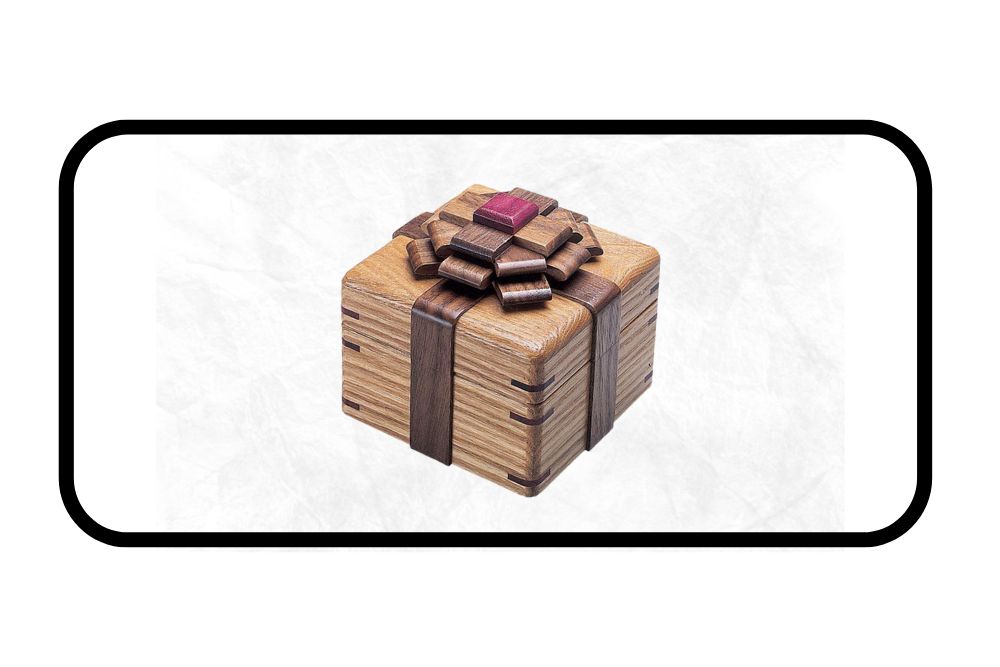
Elite puzzle boxes are designed to challenge even the most seasoned puzzle enthusiasts with complex patterns and unscramble challenges.
To solve them, it’s essential to pay attention to completed images and patterns, trying various tactics until the solution is found. In some cases, a puzzle-skipping ticket might be used to bypass particularly difficult puzzles.
Additional techniques worth exploring for elite puzzle boxes include:
- Studying the solved puzzle patterns and motifs in-depth to gain familiarity
- Recognizing rotations and repeating patterns
- Practicing with different puzzle-solving tools such as lockbox charts or sextant watches to enhance pattern recognition and navigation skills
Towers Puzzle Scroll
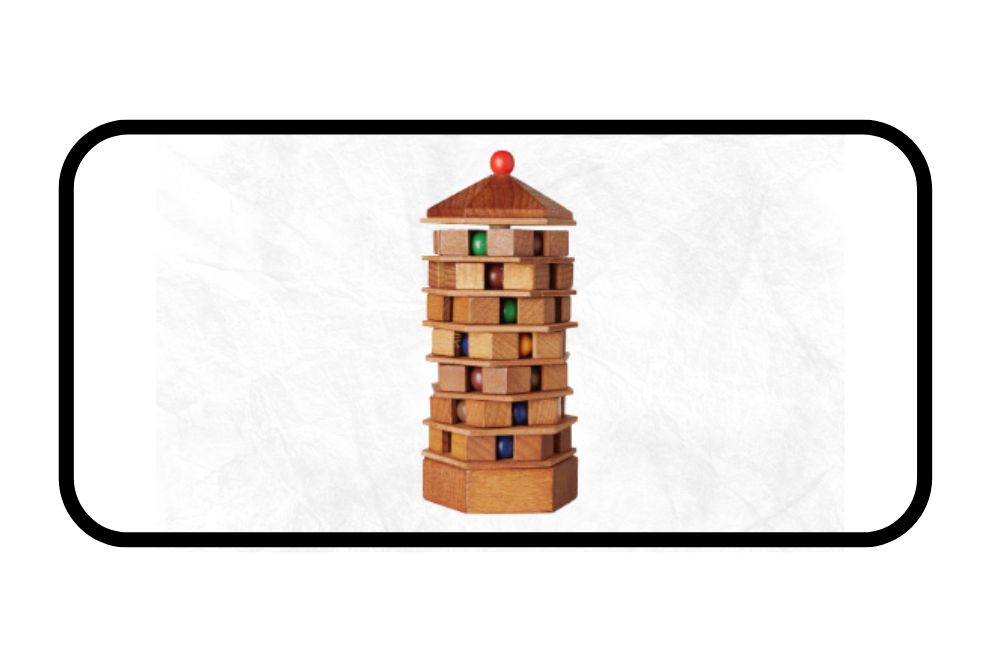
A Towers Puzzle Scroll features layers of interrelated puzzles, demanding meticulous attention to detail and strong mental organization. To solve these scroll puzzles, keeping a sharp eye on the big picture while focusing on small details is crucial.
Some helpful tactics for solving Towers Puzzle Scrolls may include:
- Constructing a basic framework or roadmap for multiple layers, outlining the direction and pattern that leads to the final solution
- Using skill riddle challenges to test and train puzzle-solving abilities
Celtic Knots
Celtic Knots are intricate and complex puzzles that require a strategic approach to solve. To untangle these knots, solvers must follow the connecting lines to understand the patterns and relationship between different segments.
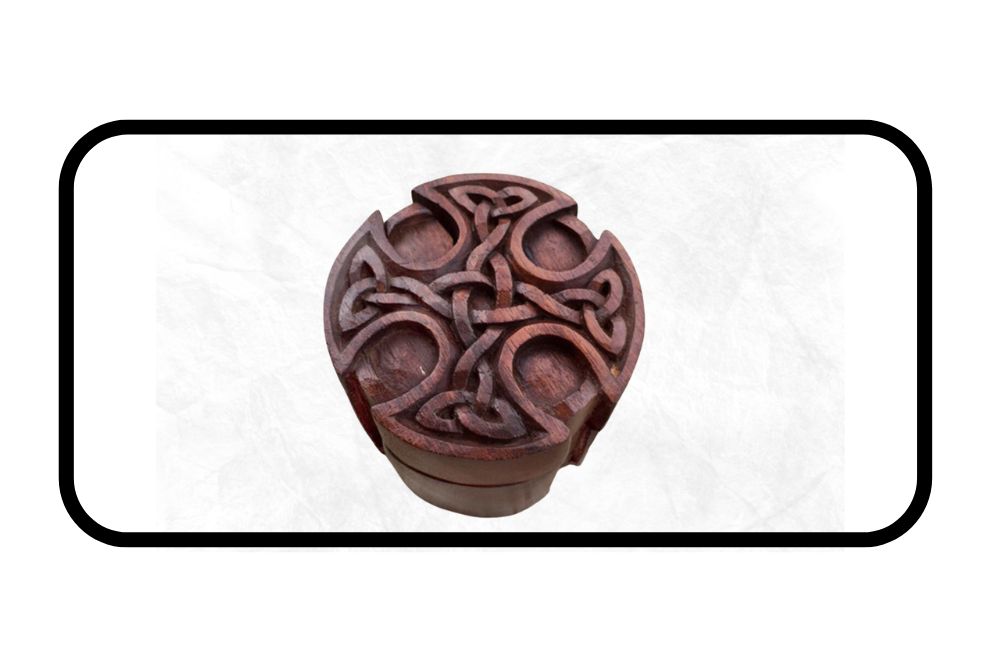
Tactics to tackle Celtic Knot puzzles can include:
- Noticing recurring motifs for guidance, such as specific colors or design elements
- Identifying anchor points, linked patterns, or chains to keep track of the path and the sections that have been tackled
Compass Puzzles
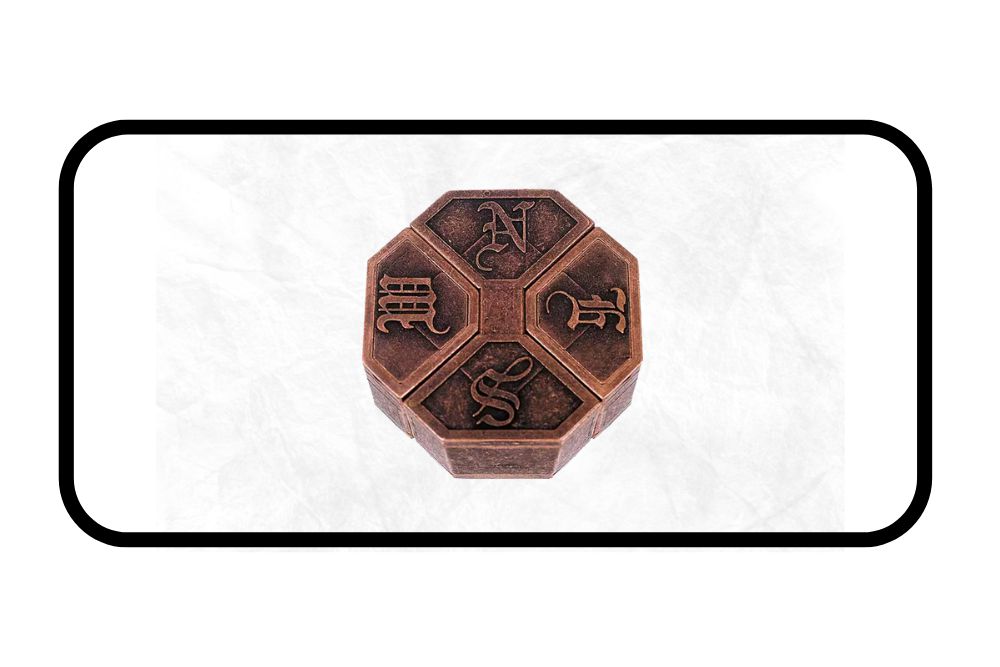
Compass Puzzles are a unique challenge that requires using a virtual compass and other tools like emotes and scans to find hidden items or solve skill riddle challenges. Solvers need to pay close attention to directional hints to navigate the puzzles effectively.
Some helpful tips for Compass Puzzles may include:
- Understanding the mechanics and limits of the compass, such as the range of rotating and tracking abilities
- Using external tools, like real-life compasses or in-game compass maps, to keep track of progress
Online Resources and Tools
When it comes to solving puzzle boxes, there is a plethora of online resources and tools available to aid enthusiasts in their quest. These websites and tools cater to various purposes, such as providing step-by-step solutions, offering a platform for sharing knowledge, or even letting users try their hand at solving virtual puzzle boxes.
Some of the most popular puzzle box-solving resources include:
- Example Puzzle Box Forum: This forum is an excellent place for sharing tips, discussing strategies, and seeking advice. Enthusiasts can find support from others who share their interest in puzzle boxes. An email address is required for registration, ensuring that curated content remains relevant and engaging.
- Example Box Solutions: A comprehensive online guide dedicated to providing solutions for various puzzle boxes. Each solution is presented in a step-by-step format, making it easy to follow along. The site organizes solutions based on the complexity of the puzzle box, with a search function available to quickly locate the desired information.
- Example Virtual Puzzle Box: Experience the thrill of solving puzzle boxes without leaving the comfort of home. This website offers a selection of virtual puzzle boxes, complete with realistic graphics, that users can solve, with hints and tips available if needed. These virtual games showcase some of the most popular and challenging designs available.
In addition to these resources, there are tools such as mobile applications and software, which can further aid in solving puzzle boxes. Many of these apps feature in-app purchases that provide extra hints and insights into the more difficult puzzle boxes.
They can be easily accessed via smartphones or computers, allowing users to take advantage of these resources wherever they are.
Remember that patience and practice are essential when tackling puzzle boxes.
Don’t be afraid to explore the various online resources and tools available, as they can significantly enhance one’s puzzle-solving abilities while still keeping the process enjoyable and engaging.
Key Takeaways
Puzzle boxes are fascinating and cerebral challenges that blend creativity with critical thinking. They come in numerous forms and styles, including object squares, sealed clue scrolls, and puzzle scroll boxes. Many enthusiasts have also documented their puzzle-solving journeys using collection logs.
Before beginning your puzzle box adventure, familiarize yourself with the variety of puzzles available.
Object squares encourage tactile problem-solving, while sealed clue scrolls introduce an element of mystery. Puzzle scroll boxes and puzzle caskets require perseverance and logical thinking to unlock their rewards.
When attempting to solve puzzle boxes, practice patience, and use a methodical approach. Break down the problem into smaller components and pursue each one methodically.
If you encounter any roadblocks, take a break and revisit the puzzle with a refreshed mindset.
Developing puzzle-solving skills takes time and effort, so don’t feel discouraged if you don’t have immediate success. Progress will come as you continue to broaden your knowledge and practice your skills.
Incorporate these techniques, and you’re one step closer to mastering the world of puzzle boxes!

